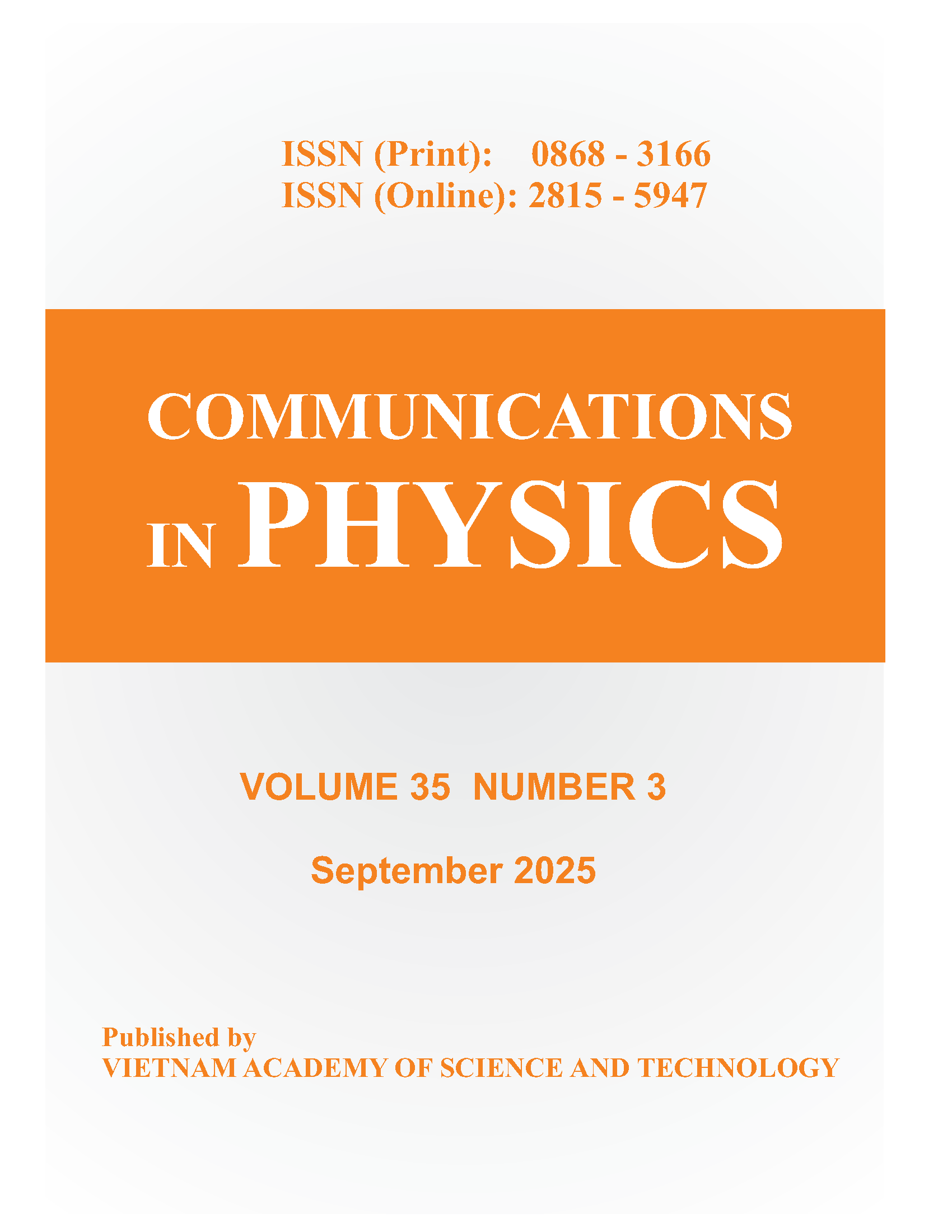All-dielectric Metamaterial for Electromagnetically-induced Transparency in Optical Region
Author affiliations
DOI:
https://doi.org/10.15625/0868-3166/30/2/14843Keywords:
all-dielectric metamaterial, electromagnetically-induced transparency, optical regionAbstract
Metamaterial (MM) is emerging as a promising approach to manipulate electromagnetic waves, spanning from radio frequency to the optical region. In this paper, we employ an effect called electromagnetically-induced transparency (EIT) in all-dielectric MM structures to create a narrow transparent window in opaque broadband of the optical region (580-670 nm). Using dielectric materials instead of metals can mitigate the large non-radiative ohmic loss on the metal surface. The unit-cell of MM consists of Silicon (Si) bars on Silicon dioxide (SiO\(_{2}\)) substrate, in which two bars are directed horizontally and one bar is directed vertically. By changing the relative position and dimension of the Si bars, the EIT effect could be achieved. The optical properties of the proposed MM are investigated numerically using the finite difference method with commercial software Computer Simulation Technology (CST). Then, characteristic parameters of MM exhibiting EIT effect (EIT-MM), including Q-factor, group delay, are calculated to evaluate the applicability of EIT-MM to sensing and light confinement.Downloads
Downloads
Published
How to Cite
Issue
Section
License
Communications in Physics is licensed under a Creative Commons Attribution-ShareAlike 4.0 International License.
Copyright on any research article published in Communications in Physics is retained by the respective author(s), without restrictions. Authors grant VAST Journals System (VJS) a license to publish the article and identify itself as the original publisher. Upon author(s) by giving permission to Communications in Physics either via Communications in Physics portal or other channel to publish their research work in Communications in Physics agrees to all the terms and conditions of https://creativecommons.org/licenses/by-sa/4.0/ License and terms & condition set by VJS.











